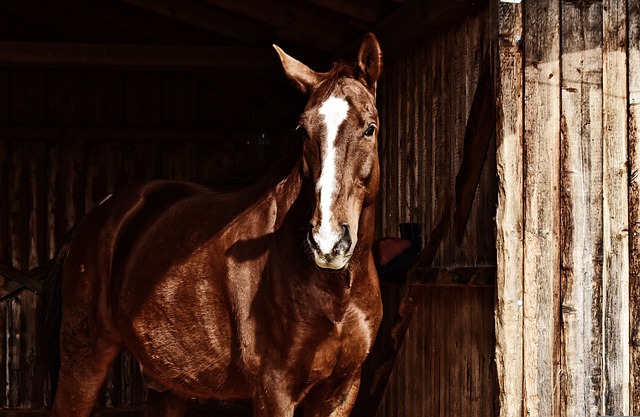What to Consider When Building a Horse Stall

Barns are considered to be better for horses overall, although there are some instances where stalls are useful. In general, it’s a good idea to train horses to live in stalls, but not to leave them for long periods, as horses require at least 12 hours of outdoor grazing daily.
When it comes to building a horse stall barn, it’s a good idea to hire a builder who is experienced in building structures specifically for horses. They will also be able to advise on matters such as where to source the most durable, high-quality building materials for your stall, and assist with planning.
Veterinarian and horse barn builder in Maryland Moira Nusbaum recommends using a location with plenty of windbreak, shade and drainage. Most importantly, Nusbaum emphasizes thorough planning and preparation before building commences.
Size Things Up
A 10-foot by 10-foot stall could be too cramped, so choose measurements that are at least 12 or 14 feet square with wide aisleways and roomy stalls. Leave a little extra room for any additions that might come along later. If they don’t, then at least you have additional storage space.
Consider Air Flow
Ventilation is especially important to minimize moisture, which can affect the overall structure of the stall. Additionally, it allows fresh air into the building, which is better for your horses and the humans spending time with them. Horse stall fans or other powered ventilation systems can help create additional airflow, should you need it.
Winter Protection
Horses generate a lot of body heat, so avoid over-blanketing, which can lead to overheating and dehydration. In a well-built stall, normal winter temperatures should not be too concerning, but if it gets especially cold, installing insulation boards is one option, in addition to placing extra bedding on the floors.
Figure Out Your Preferred Style
The overall design of horse stalls generally falls into two categories: the first are clear span stalls with trusses across the width of the structure and no interior supporting columns. You can also use free-standing stalls in these, which can attach to each other for additional support. Alternatively, you can choose an interior column style with columns supporting the rafters and roof.
Floors, Doors and Windows
While harder materials such as brick can be used in the aisles, many opt for softer materials such as rubber matting in the stables themselves, which can provide your horse with additional comfort. Sliding doors are the quieter, cheaper option for stalls, while windows allow for extra natural light and ventilation. You could also consider using an eave light. Not only is natural light better for your horses, it also saves on having to use electrical lighting, helping to lower your bills.
Extras
To keep your stall clean and organized, consider a tack room where you can keep essential riding gear and other equipment. If you’re considering this, install a door to prevent your items from becoming dusty. A built-in wash stall also comes in handy on days when the weather makes outside washing difficult.
Some Precautions
In addition to ensuring your stall is comfortable, dry and built to safety specifications, it’s also important to account for specific hazards like fire, particularly hay bale fires, which can spread quickly to horse enclosures if the hay is not kept in a separate building.


